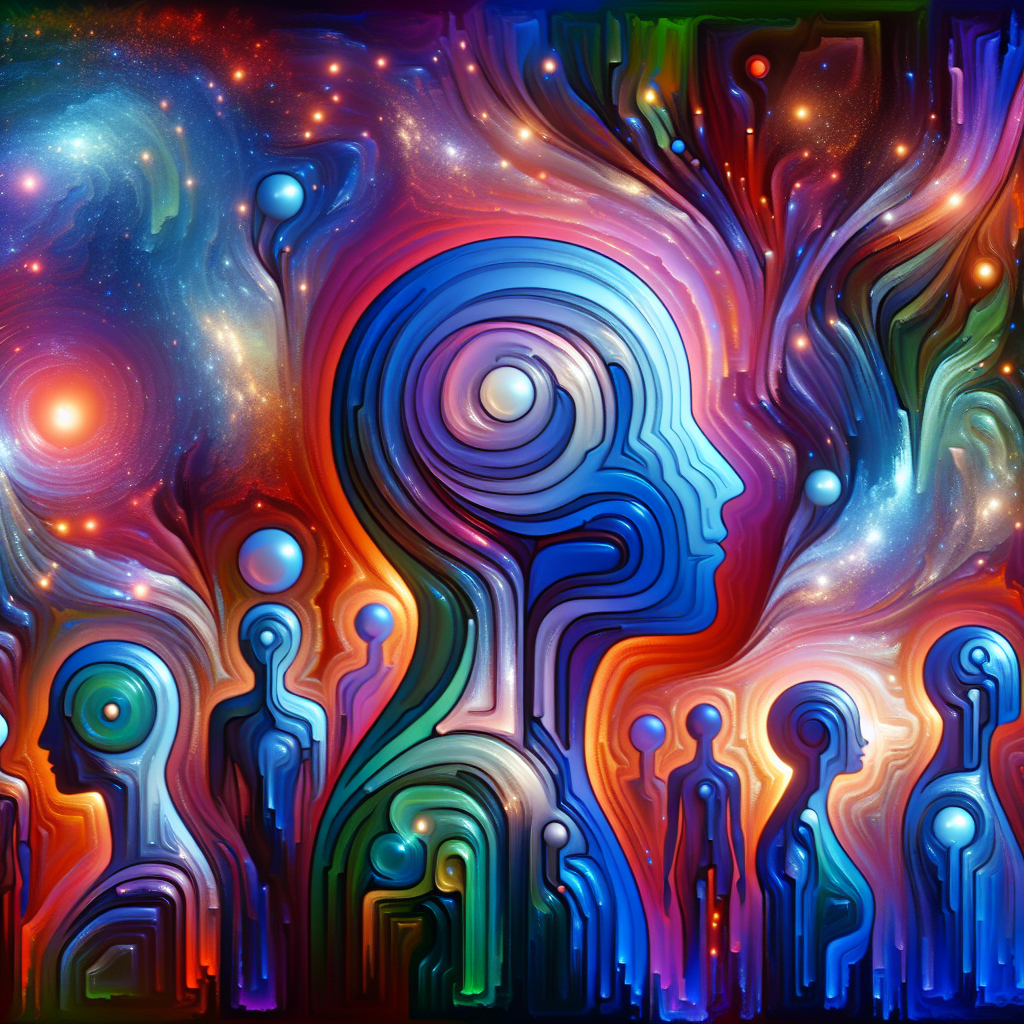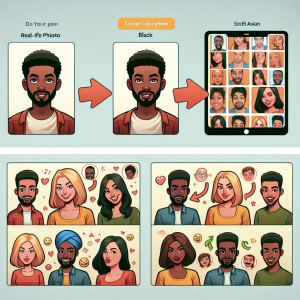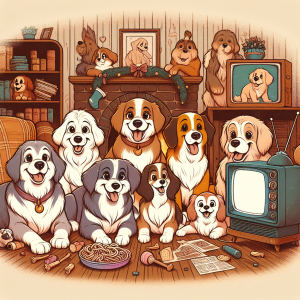Have you ever stumbled upon a cartoon character void of facial features, yet felt an inexplicable connection to it? Welcome to the intriguing realm of faceless cartoons—an artistic phenomenon that transcends traditional character design and invites viewers to explore emotions beyond mere expressions. In an age where digital art reigns supreme, faceless cartoons reveal deep insights about identity, vulnerability, and the human experience. Strap in as we navigate through this whimsical, yet thought-provoking, world!
The Allure of the Unknown
What is it about faceless cartoons that captivates us? At first glance, it may seem counterintuitive—how can a character without a face evoke feelings or tell a story? The absence of facial features, paradoxically, allows for a broader interpretation of emotions. Unlike traditional characters who often wear their feelings on their sleeves (or rather, faces), faceless cartoons can represent complex themes of identity and anonymity. This open-ended nature invites viewers to project their feelings onto these characters, creating a unique bond that is both empowering and introspective.
The Evolution of Faceless Characters
Faceless characters have a rich history in both traditional and digital art. They emerged from various cultures and artistic movements that sought to explore themes of abstraction, minimalism, and the essence of being. For example, the likes of abstract expressionism in art provided fertile ground for characters lacking distinct facial features. In more contemporary contexts, animated shows like “Adventure Time” and “The Amazing World of Gumball” have embraced minimalist designs, paving the way for faceless characters to flourish in mainstream media.
As digital art began to intertwine with animation and illustration, artists experimented further. The interplay of technology and creativity has given rise to countless faceless characters, each serving as a canvas for emotions and experiences that span cultural and social narratives.
Notable Faceless Characters in Media
Many beloved characters have gained recognition without a face to call their own. Here are a few notable examples that have made an impact:
- Jack Skellington: The Pumpkin King from Tim Burton’s “The Nightmare Before Christmas” embodies both charisma and mystery, minus the usual facial expressions of most animated characters.
- Totoro: Studio Ghibli’s beloved forest spirit showcases a gentle nature through body language rather than facial features—reminding us that emotions can be conveyed in myriad ways.
- The Unknown: Representing themes of existential dread, “The Unknown” often appears in indie animations, symbolizing our fears and uncertainties in life.
- Frog from “Animal Crossing”: While certainly cute, many characters in the franchise sport simplistic designs, engaging players through gameplay rather than facial expressions.
These characters resonate with audiences not just for their visual appeal but for how they engage us emotionally on deeper levels. The faceless quality often makes them relatable, reminding us that we all share a profound journey of self-discovery.
Creating Your Own Faceless Cartoon
So, are you inspired to create your own faceless character? You don’t need to be a professional artist to get started with this expressive art form. Here are some tips to help you unleash your creativity:
1. Start with Basic Shapes
Begin by sketching out simple shapes. Circles, ovals, and triangles can serve as the foundation for your character. The simplicity of these forms allows the viewer to focus more on the posture and body language instead of facial features.
2. Play with Body Language
With faceless characters, body language takes center stage. Experiment with different poses, gestures, and movements that convey emotions. Think about how a slight tilt of the shoulders or positioning of the arms can tell a story.
3. Use Color and Texture
Color and texture play a significant role in defining your character’s mood and personality. Bright colors can evoke happiness, while muted tones might reflect sadness. Don’t shy away from unique textures to add depth to your character’s design.
4. Focus on Symbolism
Consider incorporating symbols or items that speak to your character’s story. Whether it’s a favorite hat, an umbrella, or a pair of shoes, these elements can provide clues about who they are without needing a face.<\p>
5. Embrace Minimalism
Remember, less is often more in this style. Keep details to a minimum, allowing viewers to focus on the overarching narrative your character represents.
The Relationship Between Faceless Cartoons and Emotions
The emotional impact of faceless cartoons can be profound. These characters often symbolize feelings of isolation, anonymity, or even freedom from societal expectations. In a landscape where everyone is expected to show their “true face,” faceless designs provide a refreshing opportunity for introspection, particularly for those navigating complex emotions.
The design subtly nods to the concept of identity; we are more than our appearances, and it’s our experiences that shape who we are. Faceless cartoons remind us that our worth isn’t tied solely to how we are perceived. This narrative can resonate deeply in an increasingly digital world where faceless interactions characterize much of our communication.
Faceless Art in the Age of Social Media
As social media continues to shape our lives, the allure of faceless cartoons has skyrocketed. Platforms like Instagram and TikTok have paved the way for artists to showcase their creations and connect with a global audience. Hashtags like #FacelessArt and #AmorphousCharacters have emerged, giving rise to a community that celebrates the beauty of ambiguity.
This growing trend breaks conventional barriers in digital art, encouraging artists to explore themes of personality and vulnerability without the constraints of realism. In fact, the faceless cartoon might just be the perfect metaphor for navigating the online world—where our identities can often feel fragmented and multifaceted.
Art Therapy and the Faceless Approach
Interestingly, this art style has gained traction in the realm of art therapy. Therapeutic art allows individuals to express their feelings and cope with emotions safely. By using faceless characters, participants can distance themselves from the direct representation of feelings, allowing for vulnerable self-exploration without the pressure of showing their true selves.
Art therapy can provide cathartic release, and faceless characters offer a canvas where an individual’s emotions can blossom freely. This connection further illustrates how faceless cartoons carry profound significance within the context of mental health and well-being.
The Cultural Significance of Faceless Cartoons
From a broader perspective, faceless cartoons serve as a cultural commentary on the evolving nature of identity in modern life. Influenced by globalization and the rise of digital culture, these characters allow us to examine the fluidity of identity, showcasing how cultures blend and transform in an interconnected world.
On the other hand, they may also evoke themes of isolation and disconnection. In societies increasingly emphasizing image and representation through social media, faceless designs reflect a yearning for individuality amidst the pressure to conform. They challenge the status quo and inspire discussions on self-identity, encouraging individuals to embrace their unique qualities.
Getting Inspired by Faceless Cartoonists
Many talented artists have made a name for themselves by tapping into the faceless culture. Their works serve as a treasure trove of inspiration for aspiring creators:
- Waldemar Kwiatkowski: Known for his minimalist illustrations that capture essence without depicting features, Kwiatkowski’s art reflects the beauty of everyday life.
- Nemi Sindhu: Renowned for her expressive and abstract characters, Sindhu challenges the traditional norms of character representation.
- Patricia O’Brien: O’Brien uses vibrant backgrounds and faceless figures to evoke varying emotions, encouraging viewers to perceive stories beyond the surface.
Exploring their portfolios can spark creativity and provide a deeper understanding of how faceless cartoons can convey complex ideas. Engage with the community, share your thoughts, and be inspired!
Conclusion: Embrace the Faceless Journey
In a world dominated by highly detailed facial features and hyper-realism, faceless cartoons stand as a testament to the power of simplicity and abstraction. They allow us to plumb the depths of our emotions and connections with one another while challenging norms surrounding identity and expression.
Whether you’re an established artist or a casual observer, exploring the faceless cartoon realm can offer a refreshing perspective on creativity, individuality, and emotional responsibility. So, grab that sketchbook or digital tablet, and let your imagination run wild—there’s a whole universe waiting beyond the face!
FAQs
What are faceless cartoons?
Faceless cartoons are characters that lack distinct facial features. They often rely on body language, color, and symbolism to convey emotions and narratives, allowing viewers to project their interpretations onto the design.
Why do faceless cartoons resonate with audiences?
Faceless cartoons resonate with audiences because they invite individual interpretation and evoke emotions without relying on traditional facial expressions. This open-ended nature fosters a deeper connection, often allowing for introspection and self-reflection.
How can you create a faceless cartoon?
To create a faceless cartoon, start with basic shapes, emphasize body language, use color and texture thoughtfully, incorporate symbolic elements, and embrace minimalism. Focus on conveying emotions and narratives through your design.
Are faceless cartoons commonly used in art therapy?
Yes! Faceless cartoons can be utilized in art therapy to help individuals express and explore emotions indirectly. The absence of facial features can provide a sense of safety, enabling participants to examine their feelings without the fear of judgment or exposure.
How have social media platforms impacted faceless cartoons?
Social media platforms have significantly impacted the popularity of faceless cartoons by providing artists with a global audience. The rise of hashtags and online communities foster discussions and celebrations of this art style, leading to a wider appreciation and exploration of its themes.








+ There are no comments
Add yours